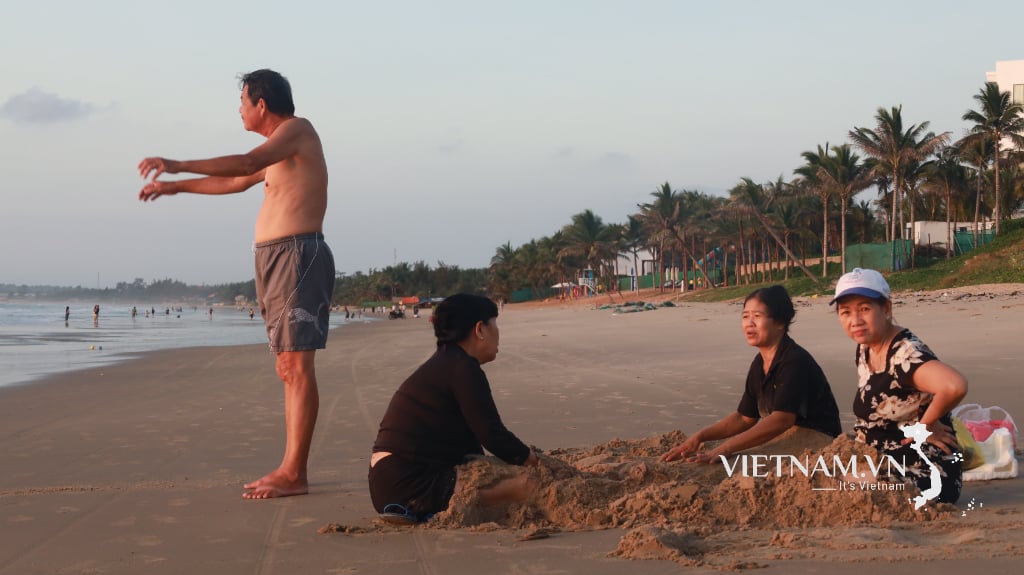There were two popular types of cassava at that time: sticky rice and cotton noodles. Sticky rice noodles, its stems and leaves are yellow-white, and the skin of the tuber is also white. The smell of this tuber is as fragrant as sticky rice but is sticky and not mushy. Cotton noodles have stems, leaf stalks, and tuber skin that are red-purple. Although they do not have the same aroma as sticky rice noodles, the tuber is very mushy, with a lot of starch, so most families in the countryside choose this type of noodle to eat on rainy and flooded days. Sometimes, they eat cassava as a side meal, "for fun", but there are also many poor families, especially those who do not have rice fields but only hilly land, for which cassava is a staple food. "Swallowing a scratched cassava root and talking about the world !" Farmers often tease each other with this saying whenever they hear someone talking about far-fetched things.
Hilly land is the place farmers choose to grow cassava because it is not flooded, so the cassava can be left until the dry season, then dug up, sliced and dried without fear of spoilage. However, the most of the sliced cassava left through the dry season is sticky rice noodles, while the cassava is usually eaten fresh.
Getting cassava roots while the plant is still alive is an "art" of the root collector. The skill of predicting how many roots there are under the soil - where the cassava roots are and which root is the largest so that they can "dig up" and cut it to bring home is the top criterion for the root collector. The word "dig up" must be used instead of "pull out" because each cassava bush usually has 3 - 5 roots but they are not all the same size. The root collector is only allowed to "dig up", that is, look at the cassava roots, guess which direction the roots grow and how big they are to dig up the soil, cut the roots to bring home, then cover the soil so that the other small roots can grow, not pull out the whole cluster.
Peel off the skin, cut into 5cm pieces and put in a pot to boil, add a little salt and a few pandan leaves to make the root salty and fragrant. Unlike sticky rice noodles, cassava cooks very quickly, in about 15 - 20 minutes you will have a pot of steaming cassava. Surrounding the pot is a warm family atmosphere.
"Cassava is so delicious that it chokes you", this sentence both specifically refers to the fact that cassava is rich in starch and can easily choke you when eaten, and also refers to something more abstract, which is the enjoyment of a rural product that is so delicious that it is beyond words!
More than 30 years ago, even though I was working, I lived with my parents, which meant I still had to "deal" with sweet potatoes and cassava every day. I was so fed up with the tubers that I put them in my poems: "I'm like a jobless guy/Coming home and then going out/I have three meals a day/But I'm afraid of sweet potatoes and cassava." Yet more than 30 years later, cassava has become a specialty, more expensive than the best rice today.
Rainy day sitting thinking about cassava. Thinking about a time of poverty but full of love...
Source link




























![[Photo] The 9th Congress of the Party Committee of the Office of the President, term 2025-2030](https://vphoto.vietnam.vn/thumb/1200x675/vietnam/resource/IMAGE/2025/6/20/78e7f27e8c4b4edc8859f09572409ad3)

























![[Maritime News] Wan Hai Lines invests $150 million to buy 48,000 containers](https://vphoto.vietnam.vn/thumb/402x226/vietnam/resource/IMAGE/2025/6/20/c945a62aff624b4bb5c25e67e9bcc1cb)










































Comment (0)